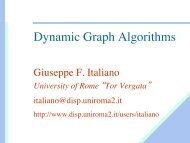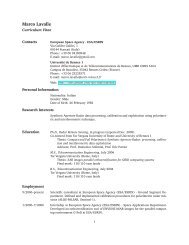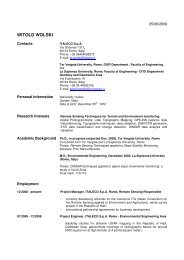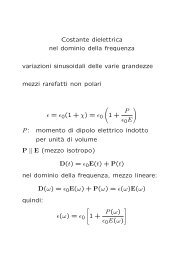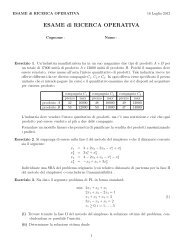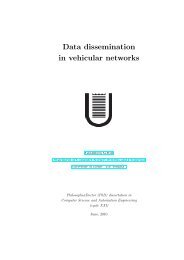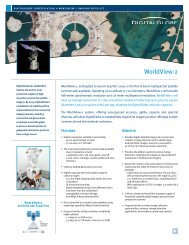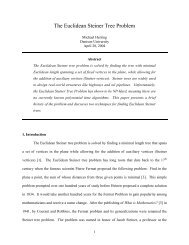TOR VERGATA UNIVERSITY UNSUPERVISED CLASSIFICATION ...
TOR VERGATA UNIVERSITY UNSUPERVISED CLASSIFICATION ...
TOR VERGATA UNIVERSITY UNSUPERVISED CLASSIFICATION ...
Create successful ePaper yourself
Turn your PDF publications into a flip-book with our unique Google optimized e-Paper software.
Introduction 5<br />
Since the late ‗70s, with the first Landsat missions, satellite remote sensing is<br />
increasingly being used as a timely and cost-effective source of information in a<br />
urban planning [3], [4].<br />
During the last two decades, significant progress has been made in developing and<br />
launching satellites with instruments, in both optical/infrared and microwave<br />
regions of spectra, well suited for Earth Observation with an increasingly finer<br />
spatial, spectral and temporal resolution [5]. With the recent availability of<br />
commercial Very High Resolution (VHR) remote sensing multispectral imagery<br />
from sensors such as IKONOS and QuickBird, it is possible to identify small-scale<br />
features such as individual roads and buildings in the urban environment (roessner<br />
et. al, 2001) and have a specific potential for more detailed and accurate mapping<br />
of urban areas [6], [7]. Imagery from these sensors is an important source of timely<br />
data, which can be used for the creation and/or updating of GIS vector layer [8].<br />
However, VHR images analysis is one of the most challenging areas for the remote<br />
sensing community due to its high spatial and spectral diversity. From the physical<br />
composition point of view, several different materials can be used for the same<br />
built-up element (for example, building roofs can be made of clay tiles, metal,<br />
concrete, glass, plastic). On the other hand, the same material can be used for<br />
different built-up elements (for example, concrete can be found in paved roads or<br />
building roofs [9]. Fig. 2 shows how the same surface (two types of roads) can be<br />
made from different material and two different surfaces (a road and a building) can<br />
be made with the same material (concrete). Misclassification occur between<br />
buildings and streets, which are caused by spectral similarities between materials<br />
covering these surfaces and the influence of shadow.<br />
A different spectral behavior could be explained also from the effect of the<br />
atmosphere, which operates at different wavelengths.





